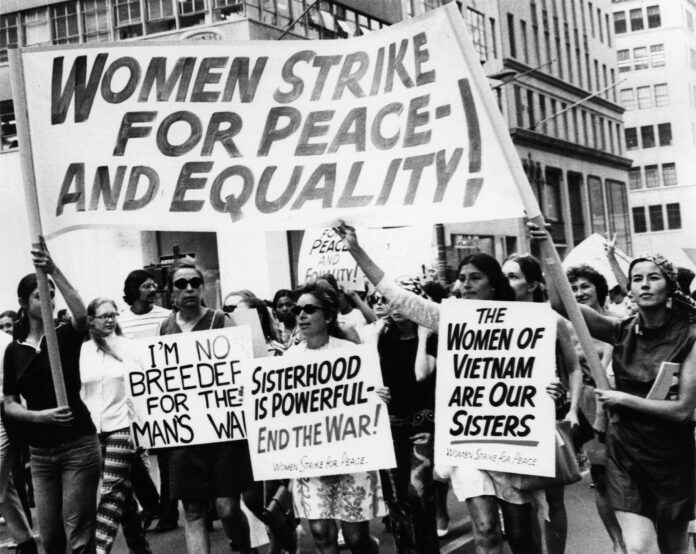Feminism, inherently linked to the advocacy for women’s rights and gender equality, prompts inquisitive minds to wonder about its nomenclature. If the ultimate aspiration of feminism is to achieve equality for all genders, why does the term prominently feature ‘feminism’ rather than ‘equalism’? This inquiry invites a closer examination of historical, cultural, and linguistic dimensions, all of which contribute to an understanding of feminism’s enduring title.
In order to deconstruct this query, it is integral to explore the genesis and evolution of feminism as a movement. Furthermore, the nuanced interplay between its historical context and contemporary interpretations sheds light on why the term continues to resonate in discussions surrounding gender equality.
The Origins of Feminism: A Historical Perspective
Feminism, as a term, emerged in the late 19th century, birthed from a milieu rife with socio-political upheaval wherein women were mobilizing for fundamental rights. The suffragette movement, which championed women’s right to vote, epitomizes this first wave of feminism. Scholars identify this period as a foundational moment, wherein the plight of women became a focal point for social reform, thereby laying the groundwork for future feminist discourse.
It is crucial to acknowledge that feminism was not born in a vacuum. The prevailing patriarchal structures, which marginalized women and rendered their contributions invisible, necessitated a distinct movement. The title ‘feminism’ served as a rallying cry, invoking the shared experiences of women who had long suffered under systemic oppression. By anchoring the movement in the experiences of women, feminism sought to illuminate the gender-specific injustices that proliferated in society.
As feminism evolved, subsequent waves emerged, each addressing unique issues faced by women. The second wave in the 1960s and 1970s expanded its focus to include reproductive rights, workplace equality, and broader societal roles. In contrast, the third wave of feminism that took shape in the 1990s and early 2000s recognized intersectionality—the idea that gender inequalities are compounded by race, class, and socio-economic status. This evolution of feminism highlights the necessity of retaining the term ‘feminism’ as a descriptor for a movement that remains intricately linked to the historical struggles of women.
The Linguistic Implications of ‘Feminism’
The term ‘feminism’ is not merely a label; it carries with it a legacy of resistance and empowerment. The linguistic roots of ‘feminism’ stem from the Latin word ‘femina,’ meaning ‘woman.’ This etymological significance is paramount, as it distinguishes the movement from other advocacy for equality. By incorporating ‘feminine’ into the vocabulary of social justice, feminism unequivocally asserts that the experiences, rights, and voices of women must take precedence in the discourse of equality.
Furthermore, the uniqueness of the term acknowledges that gender inequality disproportionately impacts women. Despite advances in social equity, women continue to experience systemic discrimination in various forms, including wage gaps, reproductive autonomy challenges, and cultural representation deficits. The term ‘feminism’ encapsulates these distinct challenges while explicitly addressing the historical contexts that have necessitated a focused movement for women’s rights.
A Misconception of Feminism: An Inclusive Perspective
Common misconceptions about feminism often arise from a binary understanding of gender equality. Critics may argue that feminism is an exclusionary ideology that prioritizes women over men. However, this interpretation fails to recognize the complexities and intricacies that underpin the feminist movement. The core tenet of feminism advocates for equal rights; its nomenclature emanates from a historical necessity that sought to reclaim women’s agency in a male-dominated world.
Moreover, contemporary feminist movements, particularly those engaging with intersectionality, emphasize inclusivity, acknowledging that gender cannot be examined in isolation from other aspects of identity. For instance, womanism, a term coined by activist and author, has emerged within feminist discourse to highlight the experiences of women of color, asserting that feminism must address the inequalities faced by marginalized populations in a holistic manner. Thus, while the term ‘feminism’ remains inextricably linked to women’s rights, it increasingly embodies an inclusive framework that seeks to confront and dismantle broad-based oppression.
The Relevance of Feminism in Contemporary Discourse
In contemporary society, the relevance of feminism is underscored by ongoing gender disparities across multiple sectors. The persistence of such inequities necessitates a movement that prioritizes women’s issues. For example, global conversations surrounding the pay gap remain a pressing topic, with women still earning a fraction of their male counterparts’ salaries. Additionally, issues such as reproductive rights continue to be contested, emphasizing the need for a feminist framework to advocate for women’s autonomy.
Furthermore, the rise of social media and digital activism has transformed the landscape of feminist discourse, creating new platforms for women to voice their concerns and challenge societal norms. The #MeToo movement exemplifies how a feminist lens allows for a collective confrontation with sexual harassment and assault, providing a space for women to reclaim their experiences and demand accountability.
Through these lenses, feminism’s continued relevance is illuminated. The term itself serves as a powerful reminder of the work that remains and the distinct struggles women continue to face. It fosters a dialogue that not only prioritizes women’s rights but compels society to engage in broader conversations about equity and justice.
Conclusion: The Enduring Necessity of Feminism
In summarizing the multifaceted layers of feminism’s nomenclature, it is evident that the title ‘feminism’ is not merely a word but a testament to a historical struggle. It signifies a movement aimed at combating inequalities that persist in contemporary society. The enduring prevalence of the term reflects an ongoing commitment to enhancing women’s rights while concurrently advocating for broader social justice.
Ultimately, as society progresses, the dialogue surrounding feminism will evolve. However, the core commitment to addressing the unique challenges faced by women must endure. While the movement may incorporate broader discussions about equality, the specificity of ‘feminism’ will remain essential for illuminating and dismantling the persistent inequalities that women encounter. In the quest for an egalitarian society, retaining the nomenclature of feminism serves as both a recognition of past struggles and a powerful impetus for future advocacy.





























